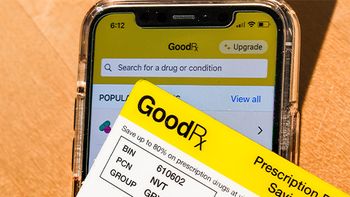
Opioid crisis commission issues interim report with numerous calls to action
Meanwhile, opioid manufacturers and distributors contend with multiple DEA penalties
If the position of the Commission on Combating Drug Addiction and the Opioid Crisis is to be believed, the US is in the midst of a national public health emergency on par with a natural disaster or terrorist attack, and immediate action is called for. Yet, this
Some of the delay might be the cognitive dissonance between the actions at the federal level called for while Congress has been debating many ways to reduce federal healthcare support. Among other items, the Commission calls for:
- Expanding the availability of Medicaid funds for mental health programs (which would include substance abuse disorders [SUDs])
- Mandating additional physician training, by HHS, for physicians involved in opioid prescribing
- Funding more medication assisted treatment (MAT), which would be a boon for anti-abuse drugs such as buprenorphine; there’s also mention of having NIH “to begin to immediately work with the pharmaceutical industry” to develop non-opioid pain relievers
- Federal funding to expand data-sharing across state lines in prescription drug monitoring programs (PDMPs), currently in use in 49 states.
All of these call for increased federal funding and agency involvement in healthcare industry practices; some of them could be implemented immediately, raising the question of what is the holdoff?
Suspicious order monitoring
The Drug Enforcement Administration (DEA) shows up in the interim report as the enforcer of additional education verification for prescribers, and as one of the agencies to combat the illegal importation of fentanyl, heroin and other opioid-based drugs. In the past year, besides the every-day interdiction that DEA (and other agencies) perform, DEA and the Dept. of Justice have been levying heavy fines against both drug distributors (each of the Big three has been hit, most notably McKesson’s record $150-million settlement in January) and manufacturers. The manufacturer targeting is a new development: now, manufacturers are being called on to maintain “suspicious order monitoring” (SOM) systems, just like distributors. In early July, Mallinckrodt settled with DoJ on a $35-million civil fine; Mallinckrodt is one of the largest manufacturers of generic oxycodone. The DoJ
[T]the government learned that manufacturers of pharmaceuticals offer discounts, known as ‘chargebacks,’ based on sales to certain downstream customers. Distributors provide information on the downstream customer purchases to obtain the discount. The groundbreaking nature of the settlement involves requiring a manufacturer to utilize chargeback and similar data to monitor and report to DEA suspicious sales of its oxycodone at the next level in the supply chain, typically sales from distributors to independent and small chain pharmacy and pain clinic customers.
It has not been the case, historically, that manufacturer chargeback management is a resource for preventing drug abuse; that might now be changing.
Newsletter
Stay ahead in the life sciences industry with Pharmaceutical Commerce, the latest news, trends, and strategies in drug distribution, commercialization, and market access.




